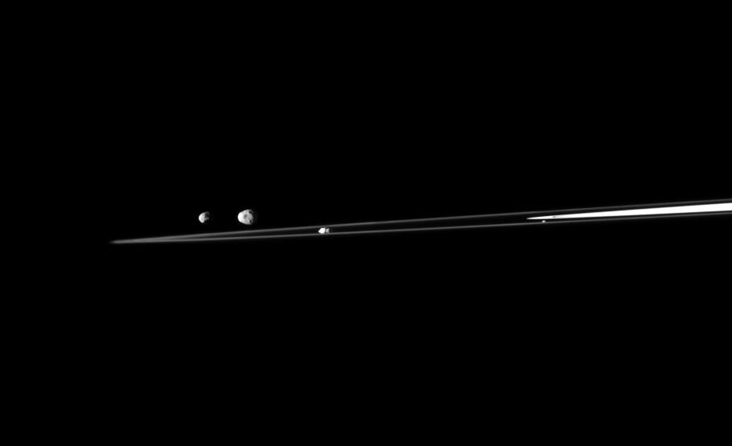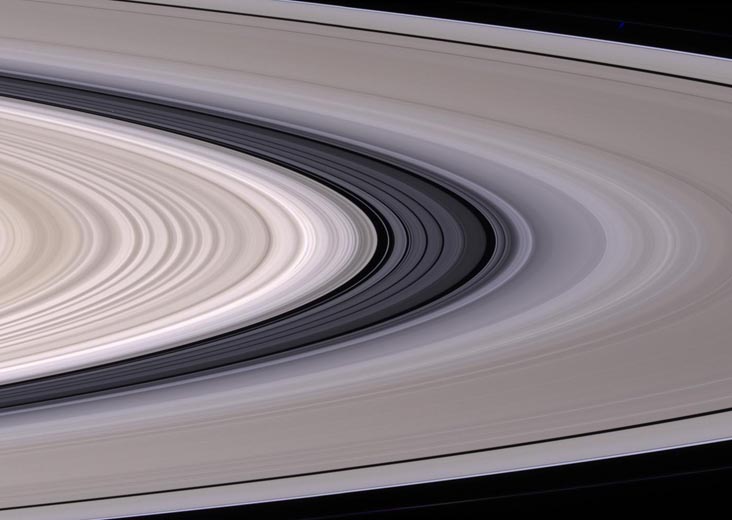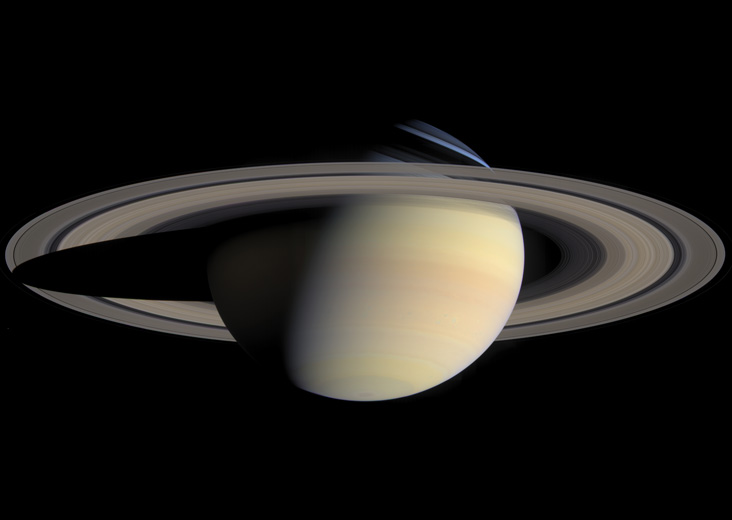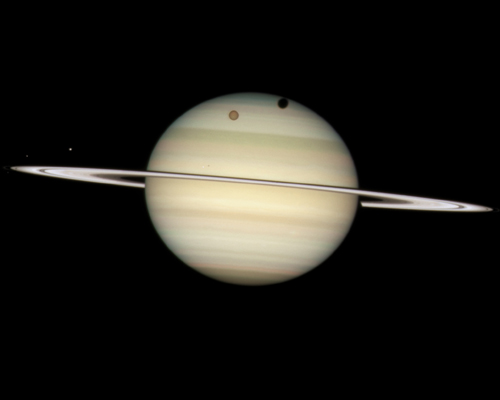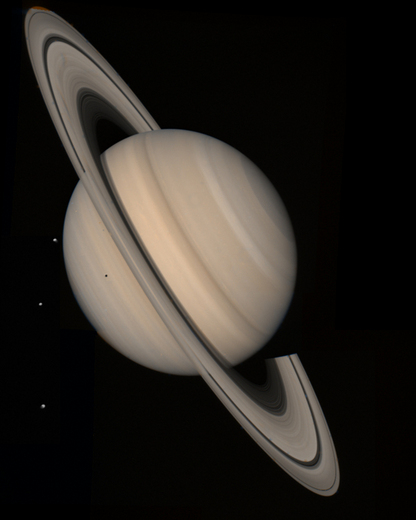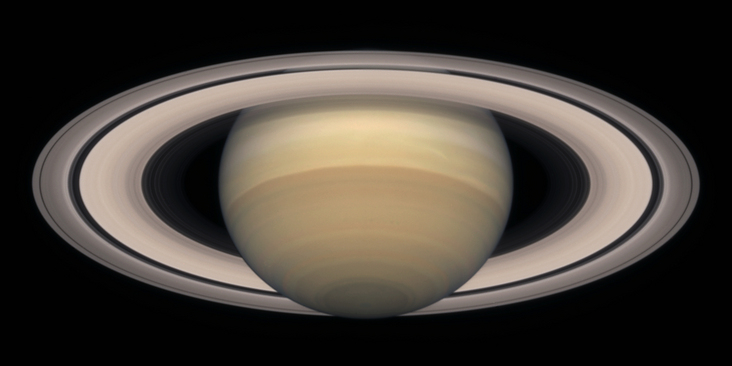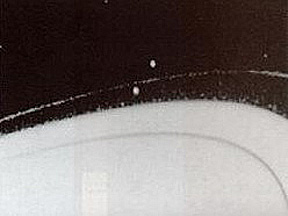The 6th and (in my opinion) the most beautiful planet in the Solar System. It is recognisable because of its stunning ring system around the equator.
The ring system is actually made up of several rings and is made up of chunks of rock. The three main rings that can be seen from Earth are the outer A ring, the bright central B ring and the inner transparent C ring. There is also a D ring that is closest to Saturn, and rings F, G and E are further out. Saturn's rings stretch further than the rings of any other planet. The outer most E ring stretches 480,000km: this is more than the distance from Earth to the Moon. Saturn's rings are very thin, in some places just 10 metres thick. In relation to their size, they are much thinner than a piece of tissue paper.
Just like Jupiter, Saturn is made up of mainly Hydrogen (96.3%) and Helium (3.7%). Its density is only 70% of that of water meaning it would float in water (if we found an ocean big enough to drop it in).
Like Jupiter, Saturn's atmosphere consists of bands of clouds. But, it is less colourful. The temperature is also lower, the white cloud at the top is just minus 140°C.
Saturn spins on its axis in just over 10 hours. This speed combined with its low density means it bulges more than any other planet: it is 11% wider at the equator than at the poles.
Saturn has 62 Moons ranging from all sizes. Titan is the second largest Moon in the Solar System and the only Moon with an atmosphere. Moons such as Pandora and Prometheus are known as Shepard Moons because they orbit around the edge of the rings and without them the particles would stray.
The best times to view Saturn are from January through to July. You can not always see the rings though because of the tilt. You would usually need a telescope to see the rings. With a naked eye, Saturn appears as a bright golden star.

